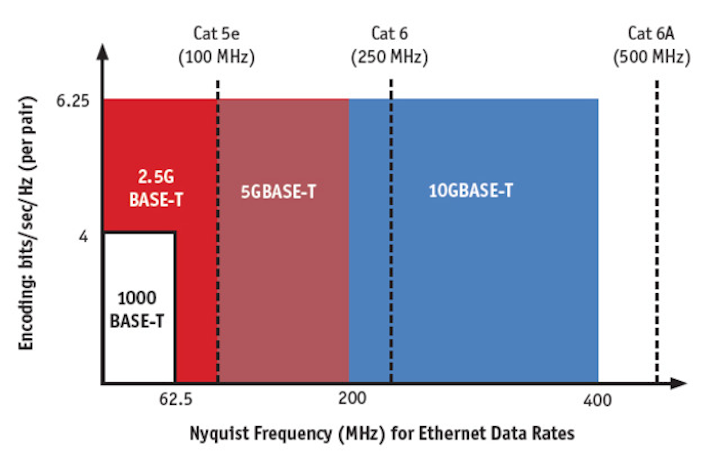In the picture above the cat 5e cable is the only one with a spline.
Category 5e cable definition.
The cable standard specifies performance of up to 250 mhz compared to 100 mhz for cat 5 and cat 5e.
As with category 5 cat 5 cables cat 5e cables typically consist of four unshielded.
99 42 99 42.
A category 5 cable cat5 cable is a type of cable that is used extensively in ethernet connections in local networks as well as telephony and other data transmissions.
Cat 5e is currently the most commonly used cable mainly due to its low production cost and support for speeds faster than cat 5 cables.
Cat 6 is the sixth generation of twisted pair ethernet cabling that is used in home and business networks.
Many cat 6 cables also include a nylon spline which helps eliminate crosstalk.
The more modern cat5e cable is produced to a higher standard and is designed to reduce crosstalk which is the phenomenon of unwanted transfer of signals in the wire that reduces throughput.
As a means of future proofing your network cat6 is generally a better choice and worth the small premium in price.
Cat 6 has to meet more stringent specifications for crosstalk and system noise than cat 5 and cat 5e.
Cat 5 is also used to carry other signals such as telephony and video.
Cat 6 cabling is backward compatible with the cat 5 and cat 5e standards that preceded it.
Category 5 cable employs a twisted pair design rather than a coaxial cable or a fiber optic cable design.
Cat 8 ethernet cable internet network lan cable high speed 2000mhz 40gbps rj45 cables for gaming xbox ps4 modem router compatible for cat7 cat6e cat5e network by haslo tech 7 99 7.
Cat5e and cat6 cables are both backwards.
Category 6 is an ethernet cable standard defined by the electronic industries association and telecommunications industry association.
Category 6 cable cat 6 is a standardized twisted pair cable for ethernet and other network physical layers that is backward compatible with the category 5 5e and category 3 cable standards.
Category 5 cable cat 5 is a twisted pair cable for computer networks since 2001 the variant commonly in use is the category 5e specification cat 5e the cable standard provides performance of up to 100 mhz and is suitable for most varieties of ethernet over twisted pair up to 1000base t gigabit ethernet.
Cat6 cables also called category 6 or cat 6 cables provide lower crosstalk a higher signal to noise ratio and are suitable for 10gbase t 10 gigabit ethernet while cat5e cables support only up to 1000base t gigabit ethernet.
In cat 6 cable the spline is not required either as long as the cable tests according to the standard.

